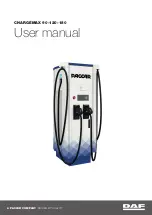
DRIVE (D): This position is for normal driving. If you
need more power for passing, and you are:
•
Going less than about 35 mph (55 km/h), push your
accelerator pedal about halfway down.
•
Going about 35 mph (55 km/h) or more, push the
accelerator all the way down.
You will shift down to the next gear and have more
power.
DRIVE (D) can be used when towing a trailer, carrying a
heavy load, driving on steep hills or for off-road
driving. You may want to shift the transmission to
THIRD (3) or, if necessary, a lower gear selection if the
transmission shifts too often.
If your vehicle is equipped with the Allison
Transmission
®
, it will initially attain first range when
DRIVE (D) is selected. As vehicle speed increases, the
transmission will upshift automatically through each
available range up to FIFTH (5). As the vehicle slows,
the transmission will downshift automatically.
The Allison Transmission
®
uses a shift stabilization
feature to adjust the transmission shift schedule to the
current driving situation to reduce rapid upshifts and
downshifts. This shift stabilization feature is designed to
determine before making an upshift if the engine will
be able to maintain vehicle speed by analyzing
things such as throttle position, vehicle load, and hill
grade. If the shift stabilization feature determines
that current vehicle speed cannot be maintained, the
transmission does not upshift and instead holds
the current gear. In some cases, this may appear to be
a hanging shift, however the transmission is operating
normally.
The Allison Transmission
®
also uses adaptive shift
controls. Adaptive shift controls continually compares
key shift parameters to pre-programmed ideal shift
conditions. The Allison Transmission
®
constantly makes
adjustments to improve vehicle performance according
to the way the vehicle is being used, such as with a
heavy load. During this adaptive shift controls process,
some shifts may feel different as the transmission
determines optimum settings for a particular shift.
By using shift stabilization and adaptive shift controls,
the Allison Transmission
®
shift schedule is variable and
adjusts to how the vehicle is being used, providing
improved vehicle performance.
THIRD (3): This position is also used for normal driving,
however it offers more power and lower fuel economy
than DRIVE (D).
SECOND (2): This position gives you more power but
lower fuel economy. You can use SECOND (2) on
hills. It can help control your speed as you go down
steep mountain roads, but then you would also want to
use your brakes off and on.
2-28
Содержание 2005 Sierra 1500 Pickup
Страница 5: ...These are some examples of symbols that may be found on the vehicle v...
Страница 6: ...NOTES vi...
Страница 19: ...Put someone on it Get it up to speed Then stop the vehicle The rider does not stop 1 13...
Страница 90: ...NOTES 1 84...
Страница 166: ...NOTES 2 76...
Страница 169: ...NOTES 3 3...
Страница 170: ...Instrument Panel Overview 3 4...
Страница 294: ...NOTES 3 128...
Страница 408: ...Engine Compartment Overview When you open the hood on the VORTEC 4300 V6 engine here is what you will see 5 14...
Страница 412: ...When you open the hood on the VORTEC 8100 V8 engine here is what you will see 5 18...
Страница 494: ...Front Position 2WD 1500 Series Front Position All Other Models 5 100...
Страница 497: ...Front Position All Models Front Position 2WD 1500 Series 5 103...
Страница 520: ...5 126...
Страница 528: ...NOTES 5 134...
Страница 547: ...Maintenance Record cont d Date Odometer Reading Serviced By Maintenance I or Maintenance II Services Performed 6 19...
Страница 548: ...Maintenance Record cont d Date Odometer Reading Serviced By Maintenance I or Maintenance II Services Performed 6 20...
















































